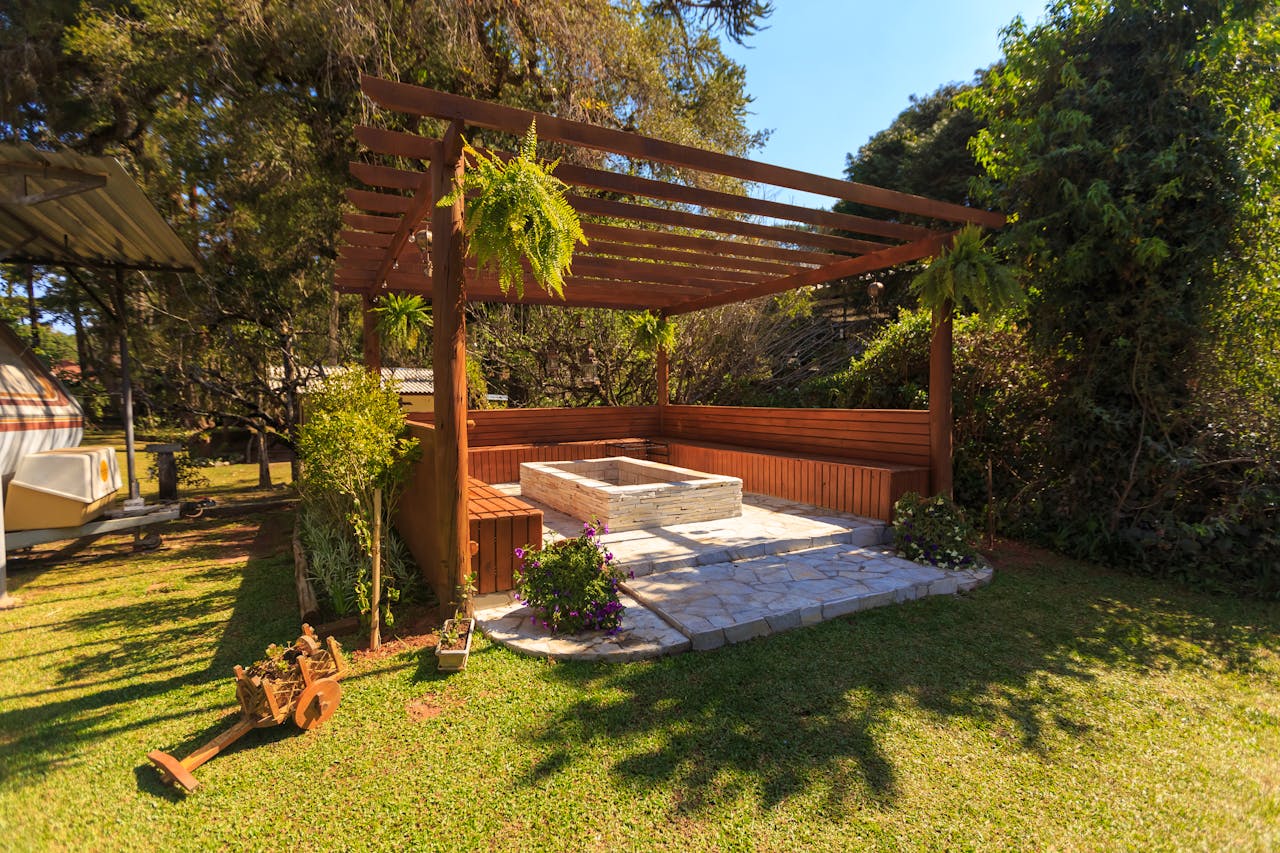Trees are vital components of our environment, providing shade, oxygen, and beauty to our surroundings. However, like all living organisms, trees can experience health issues that, if left untreated, can lead to severe damage or even death. Identifying and addressing these issues early can save your trees and maintain the ecological balance of your garden. Here are five warning signs that your tree’s health may be at risk and steps you can take to address them.
1. Discolored Or Abnormal Leaves
Healthy leaves are typically a good indicator of a tree’s overall health. When leaves begin to show abnormal signs, it can be an early warning that something is wrong with a diseased tree, indicating certain tree diseases. Here are some specific leaf symptoms to watch for:
A. Yellowing Leaves
Yellow leaves can be caused by various factors, including nutrient deficiencies, overwatering, poor soil drainage, or root damage. Iron chlorosis, for instance, is a common cause of yellowing leaves, often due to iron deficiency in the soil.
B. Wilting Leaves
Wilting leaves can result from insufficient water, root damage, or disease. It’s essential to check the soil moisture and ensure the tree is adequately watered. Persistent wilting may indicate root rot or vascular diseases such as Verticillium wilt.
C. Spots And Blotches
Fungal infections, bacterial infections, and insect infestations often cause spots or blotches on leaves. Common culprits include anthracnose, powdery mildew, and leaf spot diseases. These spots may be brown, black, or white, depending on the specific issue.
D. Distorted Or Curled Leaves
Leaves that are curled, distorted, or otherwise deformed can be a sign of pest infestations such as aphids or thrips, as well as viral diseases. Identifying the exact cause is crucial for effective treatment.
Action Steps:
- Inspect For Pests: Regularly inspect leaves for signs of pests and treat infestations promptly using appropriate insecticides or natural predators.
- Improve Watering Practices: Ensure trees are adequately watered, especially during dry periods, but avoid overwatering to prevent root rot.
- Prune Affected Areas: Remove diseased or infected leaves and branches to prevent the spread of pathogens.
2. Cracks Or Splits In The Trunk
The trunk of a tree is crucial for its structural integrity and overall health. Cracks or splits in the trunk can indicate underlying issues that need immediate attention in tree care.
A. Vertical Cracks
Vertical cracks can occur due to rapid temperature changes, especially during winter. These cracks can expose the inner wood to pathogens and pests, increasing the risk of infection and highlighting the importance of tree care.
B. Horizontal Splits
Horizontal splits are often more concerning than vertical cracks and can indicate severe structural weakness. They may result from physical damage, internal decay, or root problems.
C. Frost Cracks
Frost cracks are long, vertical cracks that appear during cold weather and close up during warmer months. They can weaken the tree and provide entry points for diseases and pests.
Action Steps:
- Seal Minor Cracks: Use appropriate tree wound dressings to seal minor cracks and prevent infection.
- Support Structural Integrity: For severe splits or cracks, consult a certified arborist who can recommend support systems such as cabling or bracing.
- Avoid Mechanical Injuries: Protect tree trunks from mechanical injuries caused by lawn equipment, vehicles, or construction activities.
3. Dead Or Dying Branches
Dead or dying branches, also known as deadwood, are a clear indication that a tree is experiencing health issues. These branches not only pose a safety hazard but can also be a sign of more extensive problems in tree care.
A. Symptoms Of Deadwood
Dead branches are typically brittle, have no leaves, and may have peeling bark. They can result from disease, pests, environmental stress, or damage.
B. Causes of Deadwood
- Pests And Diseases: Insects such as borers and diseases like cankers can cause branches to die.
- Environmental Stress: Drought, excessive moisture, and poor soil conditions can stress a tree and lead to deadwood.
- Physical Damage: Storm damage, improper pruning, and mechanical injuries can also cause branches to die.
Action Steps:
- Prune Dead Branches: Regularly prune dead or dying branches to prevent disease spread and improve tree appearance.
- Identify And Treat Underlying Causes: Determine the root cause of deadwood, whether it’s pests, disease, or environmental stress, and address it accordingly.
- Improve Tree Care Practices: Ensure the tree receives proper care, including watering, fertilization, and mulching, to enhance its overall health.

4. Fungal Growth
Fungal growth on trees is often a sign of decay and can indicate serious health issues. Fungi can attack various parts of the tree, including roots, trunk, and branches.
A. Types Of Fungal Growth
- Mushrooms At The Base: Mushrooms growing at the base of a tree often indicate root rot or internal decay. Common fungi include Armillaria and Ganoderma.
- Bracket Fungi: These shelf-like fungi can appear on trunks and branches, indicating internal wood decay.
- Powdery Mildew: This white, powdery substance on leaves is a common fungal disease that affects photosynthesis.
B. Impact Of Fungal Infections
Fungal infections weaken the tree’s structure, making it more susceptible to breaking and reducing its lifespan. They can also spread to other trees, posing a broader threat to your garden.
Action Steps:
- Remove Infected Material: Prune and dispose of infected branches and leaves to prevent the spread of fungal spores.
- Improve Air Circulation: Ensure proper spacing between trees to enhance air circulation and reduce humidity, which can promote fungal growth.
- Apply Fungicides: Use appropriate fungicides to treat fungal infections, following the manufacturer’s instructions and safety guidelines.
- Consult An Arborist: For severe fungal infections, consult a certified arborist for diagnosis and treatment recommendations.
5. Unusual Bark Texture Or Color
The bark of a tree serves as a protective layer, and changes in its texture or color can indicate underlying health issues. Here are some warning signs to watch for:
A. Peeling Or Flaking Bark
While some trees naturally shed bark, excessive peeling or flaking can indicate stress, disease, or pest infestation. Sudden bark loss can also be a sign of rapid environmental changes.
B. Discolored Bark
Discoloration of the bark, such as dark streaks, can be a sign of bacterial or fungal infections. Sudden changes in bark color should be investigated promptly.
C. Oozing Sap Or Resin
Excessive sap or resin exuding from the bark can indicate physical damage, infection, or pest infestation. It can also attract pests, leading to further damage.
D. Bumps Or Growths
Unusual growths, such as cankers, galls, or burls, can indicate disease, pest infestation, or genetic abnormalities. These growths can weaken the tree and affect its structural integrity.
Action Steps:
- Inspect Regularly: Regularly inspect the bark for any changes in texture, color, or other abnormalities.
- Identify The Cause: Determine the underlying cause of bark issues, whether it’s pests, disease, environmental stress, or physical damage.
- Apply Treatments: Use appropriate treatments, such as fungicides, insecticides, or wound dressings, to address the specific issue.
- Seek Professional Help: For severe or unexplained bark issues, consult a certified arborist for diagnosis and treatment recommendations.
Final Remarks
In conclusion, recognizing the warning signs of tree stress, implementing preventive measures, regularly assessing tree health, and knowing how to handle hazardous trees are crucial steps in safeguarding your tree’s well-being. By staying vigilant and proactive, you can ensure the longevity and vitality of your trees while also maintaining a safe outdoor environment for you and your loved ones.
Take charge of your tree’s health today by applying the knowledge and strategies shared in this article. Your trees will thank you with robust growth, vibrant foliage, and a thriving presence in your landscape.
Frequently Asked Questions
1. What Are The Common Signs Of Tree Stress?
Trees show signs of stress through wilting leaves, discoloration, stunted growth, and early leaf drop. Keep an eye out for these indicators to address potential health risks promptly.
2. How To Prevent Tree Health Issues?
Regularly water, mulch, and prune your trees to maintain their health. Ensure proper soil conditions and adequate sunlight exposure to promote strong growth and resilience against diseases and pests.
3. How To Assess The Health Of A Tree?
Inspect your trees for signs of damage, pests, or diseases regularly. Look for changes in foliage color, leaf size, and overall tree structure. Consulting with an arborist can provide a professional evaluation.
4. What Should I Do With Hazardous Trees On My Property?
Identify hazardous trees by checking for leaning trunks, dead branches, or signs of decay. Contact a certified arborist to assess the risk level and recommend appropriate actions like pruning or removal.
5. Why Is It Essential To Address Tree Health Risks Promptly?
Timely intervention can prevent irreversible damage to trees and ensure the safety of your property. Healthy trees enhance the environment, provide shade, improve air quality, and increase property value.
Transform Your Landscape With JC Tree Service’s Expert Tree Health Care
If tree health issues are impacting your home or business, JC Tree Service is equipped to provide expert solutions. Whether it’s unsightly trees affecting your property’s visual charm or potential hazards posing a safety risk, our specialized team manages it all. We offer comprehensive tree health services, including precise pruning, disease management, and expert landscaping, serving Brentwood, Antioch, and surrounding areas.
We understand the crucial roles of aesthetics and safety in tree care, hence we commit to delivering top-tier services tailored to your needs. Maintaining tree health is vital not only for enhancing your property’s appearance but also for ensuring the safety of your surroundings. Effective tree health care helps prevent disease spread, reduces the risk of falling branches, and promotes a thriving environment. With JC Tree Service, you can be confident that your landscape is in the hands of professionals dedicated to keeping your outdoor spaces both beautiful and safe.
Don’t let tree health issues detract from the beauty and security of your surroundings. Contact JC Tree Service today to explore how our expert tree health care and additional services can transform your property. We offer a free, no-obligation quote to get you started. Experience the impact of professional tree care!
Disclaimer
The materials available on this website are for informational and entertainment purposes only and not to provide legal or professional advice. You should contact your attorney or home improvement specialist to obtain advice concerning any particular issue or problem. You should not act or refrain from acting based on any content included in this site without seeking legal or other professional advice. The information presented on this website may not reflect the most current home improvement developments. No action should be taken in reliance on the information on this website. We disclaim all liability concerning actions taken or not taken based on any or all of the contents of this site to the fullest extent permitted by law.


